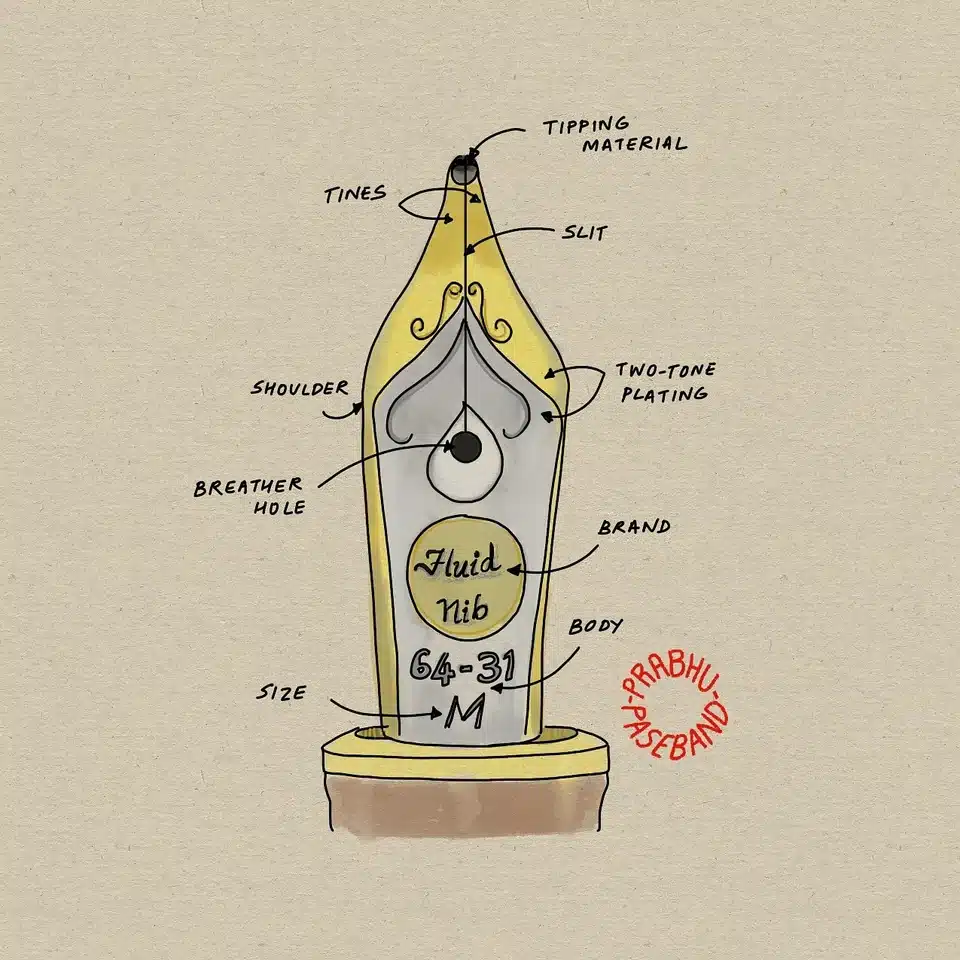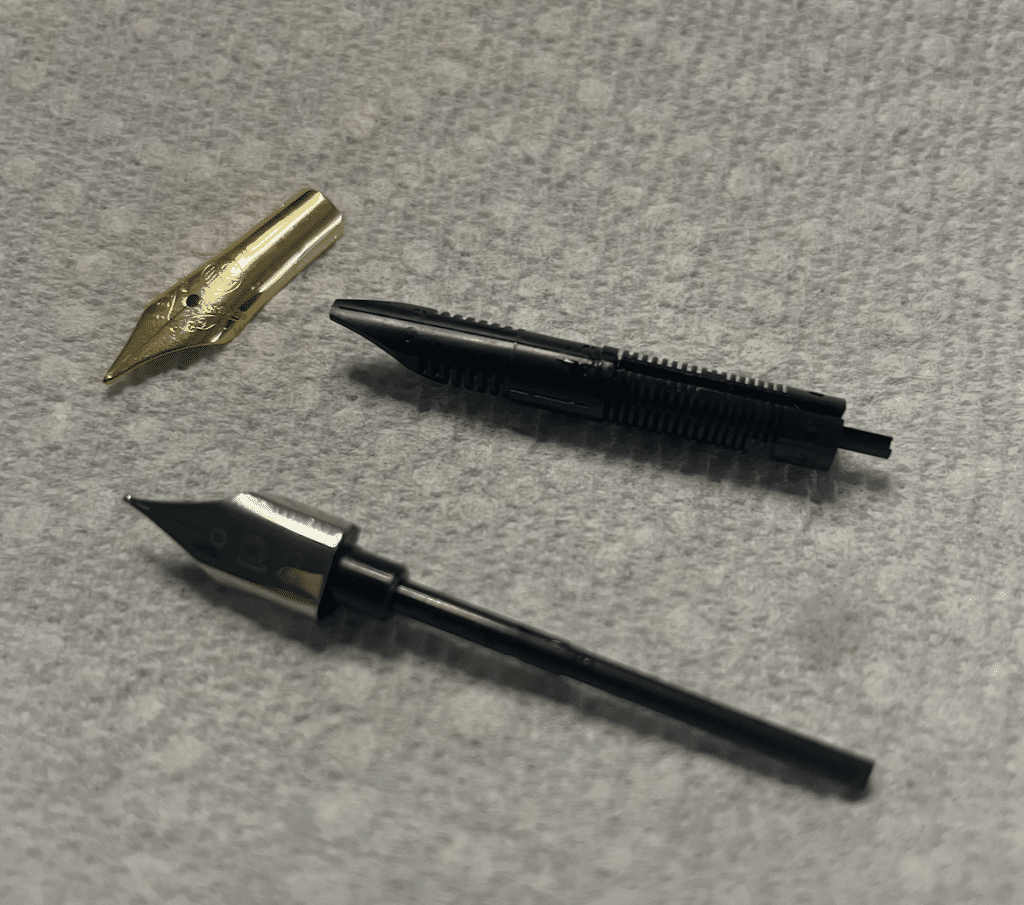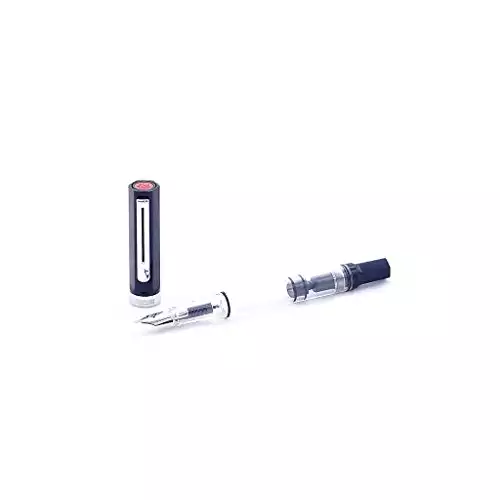Fountain pens have been a beloved writing instrument for centuries. The unique flow of ink and the smooth writing experience cannot be matched by other pens. One of the most important aspects of a fountain pen is the nib – the tip of the pen that comes into contact with paper and determines the pen’s writing characteristics, such as line width, ink flow, and overall feel.
So let’s explore the different sizes and styles of fountain pen nibs and help you choose the perfect fountain pen nib for your needs.
The Anatomy of a Fountain Pen Nib
Before we dive into the different sizes and styles of nibs, let’s take a closer look at the anatomy of a fountain pen nib. A typical fountain pen nib consists of a few essential parts: the tipping material, the nib slit, the breather hole, and the nib base.

Did you know that the tipping material can be made from a variety of materials, including gold, silver, and platinum? Some fountain pen enthusiasts believe that gold nibs provide a smoother writing experience, while others prefer the durability of iridium or steel.
Here are some tips on how to clean your fountain pen nib to ensure it writes smoothly and lasts a long time.
The Tipping Material
The tipping material is the small ball of iridium or other durable metal at the end of the nib. This is the part of the nib that comes into contact with paper and affects the pen’s ink flow and the width of the line it produces.
The width of the line produced by a fountain pen depends on the size of the tipping material. Fine nibs have a smaller tipping material and produce a thinner line, while broader nibs have a larger tipping material and produce a wider line.
The Nib Slit
The nib slit is the narrow opening that runs down the middle of the nib from the tipping material to the nib base. It allows ink to flow from the pen’s reservoir to the tipping material and onto the paper.
The width of the nib slit also affects the ink flow of the pen. A wider slit allows more ink to flow onto the paper, resulting in a wetter and more expressive line, while a narrower slit produces a drier and more controlled line.
The Breather Hole
The breather hole is a small hole drilled into the nib to ensure ink flow consistency. As ink flows from the reservoir through the slit and onto the paper, air must be able to enter the pen to replace the ink. The breather hole is where it enters.
Interestingly, the size and placement of the breather hole can also affect the pen’s ink flow. A larger breather hole allows more air to enter the pen, resulting in a wetter line, while a smaller breather hole produces a drier line.
The Nib Base
The nib base is the wider part of the nib that connects it to the rest of the pen. It is essential for ink flow and serves as the nib’s anchor point.
The shape of the nib base can also affect the pen’s writing experience. Some nibs have a curved base, which allows for more flexibility and variation in line width, while others have a straight base, which produces a more consistent line.
Now that we’ve explored the different parts of a fountain pen nib, it’s time to dive into the world of nib sizes and styles!
Common Nib Sizes and Their Uses
Now that we have a basic understanding of a nib’s anatomy let’s look at the most common fountain pen nib sizes and their uses.
Extra Fine Nibs
An extra fine nib typically has a tip size of 0.2mm to 0.3mm. It produces a fine line suitable for detailed handwriting, drawing, and intricate work, like calligraphy. This nib is perfect for those with small handwriting and those who prefer plenty of control over their pen.

When using an extra fine nib, it is important to note that the pen should be held at a consistent angle to get the best results. This nib is also great for writing in small spaces, like in a planner or on a sticky note.
Fine Nibs
A fine nib generally has a tip size of 0.4mm to 0.5mm. It is slightly broader than an extra fine nib and produces a finer line than other standard pens. This nib is perfect for general writing, note-taking, and drawing details.
One of the advantages of using a fine nib is that it allows for neat and tidy handwriting. It is also a great choice for those who want to add a personal touch to their letters or journals. Fine nibs are also great for drawing fine details, like the petals of a flower or the feathers of a bird.
Medium Nibs
A medium nib usually has a tip size of 0.6mm to 0.7mm. It is the most common nib size and writes a line that is suitable for everyday use and easy to read. It is ideal for writing longer texts like journaling or letter writing.
Medium nibs are versatile and can be used for a variety of purposes. They are great for writing in a notebook or on loose-leaf paper. They are also a good choice for those who want their handwriting to be legible and easy to read. I love my medium nib TWISBI Eco.
I love my TWISBI Eco with a medium nib. It's such a smooth writer, and the clear barrel also shows off your ink. It's a great all-around pen.
Broad Nibs
A broad nib typically has a tip size of 0.8mm or larger. It produces a broad line that is perfect for making bold statements or large lettering. It is ideal for drawing, sketching, and lettering projects.
When using a broad nib, it is important to note that the pen should be held at a consistent angle to get the best results. This nib is also great for creating emphasis in your writing or drawing. It is perfect for creating headings, titles, or other important text that needs to stand out.
Double Broad Nibs
A double broad nib is the biggest nib size available and has a tip size of 1.1mm or more. It produces the broadest lines possible and is ideal for those who want to make an impact with their writing or drawing.
Double broad nibs are great for creating large letters and bold strokes. They are perfect for creating signs, posters, or other projects that need to be seen from a distance. This nib is also great for creating calligraphy or other decorative writing.
Now that you know more about the different nib sizes and their uses, you can choose the perfect nib for your next project or everyday writing needs.
Download this cheatsheet and get expert solutions for the 13 most common pen problems.
Get The FREE CheatsheetNib Styles and Their Characteristics
Now that we have covered the different nib sizes, let’s look at the various nib styles and their unique characteristics to find the perfect one for your pen.
Round Nibs
Round nibs are the most common style and create a consistent line width in every direction. They are perfect for everyday writing and general drawing.
Stub Nibs
Stub nibs come with a flat or squared-off tip and create a line that changes width based on the angle of the pen, producing thick downstrokes and thin upstrokes. They are ideal for calligraphy and italic lettering.
Italic Nibs
Italic nibs produce a crisp, clean line with minimal variation and are perfect for classical calligraphy and lettering. They are slightly different from a stub nib as they have a sharper edge and create a strong line weight contrast.
Oblique Nibs
Oblique nibs are similar to stub nibs, but with a slanted cut, creating wider downstrokes and thinner upstrokes. They are ideal for cursive or joined writing.
Flex Nibs
Flex nibs are specially designed to flex and create a line variation based on the pen’s pressure on contact with the paper. They are ideal for creating artistic line variation, dramatic lettering, and beautiful calligraphy.
Experiment With the Best Fountain Pen Nibs for You
Choosing the right nib is crucial for your writing and project needs. Whether it be an extra fine nib for precise details or an oblique nib for elegant cursive, the right nib can make all the difference.
Understanding the various sizes and styles will help you take full advantage of your fountain pen, unlock your creativity, and elevate your writing to another level. And, don’t forget, with many pens you can switch out the nibs to change your writing style.
Liz
Hey, I'm Liz. I'm the founder of this thing. Pen-obsessed and a notebook nut, I love writing by hand. So I'm gonna talk about it on a computer.Download this cheatsheet and get expert solutions for the 13 most common pen problems.
Get The FREE Cheatsheet
